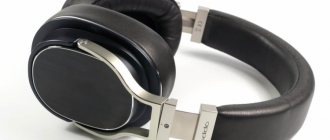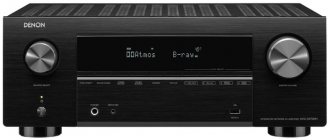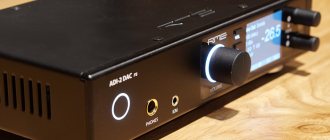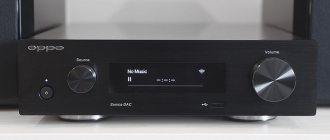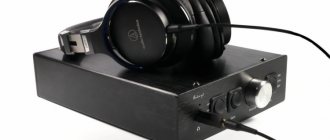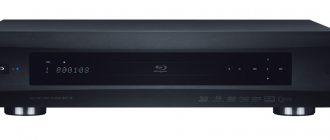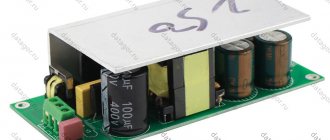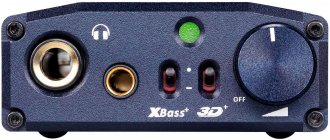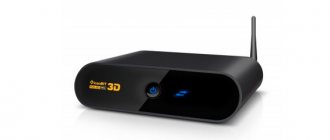Two weeks ago I heard for the first time what planar magnetic headphones could sound like. Beyond the confines of the mass market acoustics, there is a vast world of technology and knowledge. The acquaintance was a surprise, and during the process I did not notice that the courier had brought me not one, but two boxes at once. One contained the PM-1, and the other contained the unique HA-1 .
Made with the modern consumer in mind, this gadget is even compatible with the iPhone. But the most demanding audiophiles will be satisfied with it. OPPO HA-1 is packed with high-quality hardware and truly outstanding technologies that boldly elevate the amplifier into the true Hi-Fi segment. With it you can enjoy music and sound in truly maximum quality from any more or less modern source.
Design
Opening the box of the HA-1 felt like deja vu, like taking out the PM-1 headphones again. The memory is unique - like a leap into the unknown. As if in a story about a monkey and glasses, you feel helpless when you take a heavy and unusually large amplifier out of the box. In the last two years I have not felt the need to use something like this in my everyday life. But very often I heard audiophiles talk about “amplifiers”, the difference in DACs and other specific topics and terms.
I've never cared enough about sound quality to buy an amplifier. But the box opens simply: none of the headphones and speakers I’ve ever owned have required additional equipment to truly reveal their qualities. PM-1 became exactly the starting point from which there is a desire to dive deeper into the world of high-quality sound, breaking the barrier of marketing and mass brands. Therefore, on the table next to the TV, I had an HA-1, to which everything possible was constantly connected. And a lot is possible.
The amplifier body is made of our favorite metal - aluminum. Its shade is closer to matte. There are two design colors available on the market: black and traditional silver. Standing on four massive metal “legs,” the HA-1 looks great on a shelf. There is no need for anything else.
The style of the controls, indicators and the shape of the device as a whole are strict, meeting the standards of audio technology. The design is moderately modern, laconic, without bold or bright details. The only things that stand out are the large black screen and the blue LED above the power button.
Only 15% of all other ports and inputs of the device are accessible from the front panel of the HA-1. Among them, the USB input immediately catches your eye, designed for direct connection of an iPhone, iPad or iPod touch. It is already clear that OPPO tried to interest the widest segments of the population with this product, who usually do not purchase amplifiers at all. There is also an input for a “professional” XLR cable, which significantly improves the sound quality of the headphones (more on this later).
Even in front there is a full-fledged liquid crystal display with several operating modes: a visualizer displaying the frequency spectrum in real time, more traditional channel signal indicators, or dry information about the source, signal format and volume level. The latter is also dedicated to another “pop-up” screen that appears when you turn the power control. The presence of a screen, even if used for narrow purposes, is a pleasant “trifle” that enlivens the front panel of the amplifier and sets it apart from its generally static counterparts. The spectrometer looks the coolest here.
The bulk of the ports are accessible from the back of the HA-1. There was a place for everything that might be needed when using this amplifier in conjunction with home theaters and, in general, any traditional acoustics and audio equipment. I would also like to note the presence of a USB input. The device in question can be used as an external audio card by connecting a desktop or laptop computer to it. Including Mac. The advantage of the USB mode is that the sound from the computer is not processed by the computer’s weak audio chip and is sent to the amplifier in its original digital format. This avoids distortion introduced by the sound source equipment.
If you look closely, you will notice a Bluetooth . The amplifier fully supports connectivity and data transfer via this wireless standard, which, in turn, allowed OPPO to implement several cool features for smartphone and tablet users. Firstly, you can control all functions of the HA-1 from mobile devices using a proprietary application from the App Store and Google Play. The mobile device then acts as a control panel with icon keys. And secondly, any modern gadget can be connected to an amplifier via Bluetooth, outputting sound wirelessly.
The aptX® codec is used to minimize wireless signal transmission defects. The function works as expected simply: find “amplifier” in the Bluetooth menu on your iPhone or iPad and connect – and then all the sound is automatically transferred to the mercy of the receiver, as if it were not a specialized computer, but some kind of wireless headphones. However, this feature is aimed solely at convenience, not playback quality. For perfect transmission, it is better to use more reliable, proven methods. That is, plug the cable where you need it.
Having both RCA and XLR inputs and outputs is a step forward for home theater owners interested in using the HA-1 as a preamp. And automation enthusiasts will appreciate a pair of trigger connectors that allow you to combine the amplifier and other devices in your audio system into a single “circuit” that is triggered simultaneously when the power is turned on on any of the devices.
The HA-1's internals are even more interesting.
Technologies
So, we are dealing with a class A amplifier. Once again, I will note the talent of the Russian office of OPPO - or my lack of sufficient knowledge about audio technologies. On the official website everything is described in such a way that every second time I had to go to Wikipedia.
A Class A amplifier controls the signal over the entire range of the input signal period. The output transistors are biased to operate within their highest linearity range. At the zero crossing there is no distortion caused by the signal switching between two push-pull devices. The HA-1 headphone power amplification circuit is class A and uses discrete transistors. The discrete design allows for precise selection of perfectly matched parts to assemble the HA-1.
The internal analog audio signal path in the NA-1 is completely balanced. The signal for digital audio is balanced all the way from the DAC to the output connectors. The balanced analog input remains intact, but the single-ended input is converted to balanced in the input buffer. All single-ended inputs are also derived from a balanced signal. The balanced design gives better common mode noise rejection and improves signal quality. The balanced headphone output provides double the voltage and quadruple the power of the unbalanced output, allowing the HA-1 to drive the most power-hungry headphones. It also provides better channel separation by eliminating a common fault path through ground.
Do you understand everything? I’ll state it briefly to help you understand the situation: there are cool things inside. The HA-1 is a welcome guest in the home of fans of high-quality sound, as evidenced again by the corresponding topic on the audiophile site Head-Fi.org. The amplifier has been on the market relatively recently, and enthusiasts have already written more than 130 pages of positive reviews, reviews and observations. By the way, while reading the topic while writing the text, I found out that this amplifier can also be updated: flash it through a computer and USB connection using official tools. I’ll be honest: I didn’t take any risks.
OPPO did not skimp on the DAC. Apple, learn. The HA-1 uses the SABRE32 Reference ES9018 chip from ESS Technology. The manufacturer claims that this chip is the most efficient among its 32-bit “relatives”, and therefore is used both in home and amateur conditions, and in professional equipment.
Featuring ESS's patented 32-bit Hyperstream™ DAC architecture and time-domain jitter suppressor, the SABRE32 Reference DAC delivers unprecedented dynamic range of up to 135 dB and THD+N (total harmonic distortion + noise) of -120 dB, industry-leading performance that will satisfy the most demanding connoisseur of sound.
HA-1 is also an officially certified accessory for Apple mobile gadgets. I can imagine the confusion of the Cupertino employees when they brought in a professional amplifier for $1,500, in which the role of the iPhone is assigned only as a plug for the USB port. But the fact remains: regardless of the firmware, the “amplifier” will work normally with iDevice. The signal is transmitted through the iPhone's USB cable without distortion, which should please novice “purists.” Official support is announced for iPhone models of the last three generations.
The box also contains an aluminum control panel. A distant relative of the Apple Remote, probably.
OPPO HA-1 Specifications
- Reproducible frequency range: 10 - 200,000 Hz (+0/-1 dB)
- Harmonic distortion: 0.00071%
- Signal-to-noise ratio: 111 dB
- Channel separation: 90 dB
- Inputs: coaxial x1, optical x1, line x1, balanced x1, trigger x1
- Outputs: headphones x2, line x1, balanced x1, trigger x1, PreAmp
- Interfaces: USB Type B
- Front panel connectors: headphones, USB Type A
- Headphone Jack: XLR/6.3mm
- Dimensions (WxHxD): 254x80x333 mm
- Weight: 5.9 kg
Sound
My main amplifier for the last few years has been my iPhone. Which also played music. I'll be honest: I didn't know what to expect from the HA-1. How will the sound change compared to what the same smartphone or MacBook produces? The simplest answer that does not convey the situation is power. The power and quality of the sound signal, which conventional devices simply cannot handle, are brought to near perfection here.
What to put into an amplifier worth 69,990 rubles? That's right: headphones for 59,990 rubles. PM-1 and HA-1 connected to each other are an ideal tandem, leaving no chance for poor quality sound. After reviewing the PM-1, the manufacturer promised that the signal through their proprietary amplifier would be noticeably better than the one I danced around in the previous article. In principle, that’s what happened.
At first I connected the amplifier to my iPhone via Bluetooth, and then switched to wired mode by inserting the Lightning cable into the USB port. In both modes, you can control music playback on your iDevice using the included aluminum mini-remote control. I also connected a MacBook to the HA-1, which identified it as an external audio device without any problems.
The more tracks I listened to from my library, the more I felt like both OPPO devices were made exclusively for each other. The almost magical detail of low and mid frequencies in the PM-1 has become even more varied and deeper due to the amplifier “pulling” the entire frequency spectrum. Moreover, the high frequencies also got a second wind: the chime of instruments and the smallest differences between their parts and positioning on the virtual stage were felt stronger than before.
The bass received more of a “blow” – a slap on the ears, which sets the rhythm of the entire composition. The highs have become noticeably “cleaner” and sharper, without standing out from the overall picture. The XLR cable included with the amplifier and compatible with the PM-1 gives the best results, particularly creating a wider soundstage. This connection is especially useful when listening to uncompressed audio file formats from sources connected to the amplifier via digital ports, including USB. The way classical and instrumental genres are revealed in this configuration is personally breathtaking for me.
To understand the situation: I listened to a variety of file formats, ranging from traditional .MP3 with a variety of bitrates to the obligatory .flac recordings, ALAC “rips” of albums, and even one WAV collection. I also used the services of several specialized websites to test the capabilities of audio equipment. For example, one of them is the excellent and free service AudioCheck.net with a lot of cool samples for checking everything that can be checked in headphones, speakers and subwoofers.
It's sad that you have to resort to torrent trackers to find high-quality digital music. I couldn’t find a single sane service for purchasing .FLAC or .ALAC, except for the very “parochial” Bandcamp. I hope that one day Apple will start selling uncompressed tracks in their store. Well, I envy the owners of vinyl players and an extensive collection of CDs. You will be able to appreciate the capabilities of this amplifier even more easily than others.
In order not to fall into the whirlpool of audiophile prejudices, I disconnected from the amplifier several times and continued listening to music directly from my iPhone or MacBook. There is still a difference, and it is impossible to deny it. Moreover, if the iPhone 6 is somehow able to pull PM-1 to an acceptable volume level, then many other smartphones and tablets will suffocate somewhere halfway. This is where modern electronics in the HA-1 are needed, which will pick up half-dead mobile devices and saturate expensive headphones with normal sound.
Once again I want to make a reservation about the quality of the source. No matter how cool and cool the new iPhone is, its audio part will never meet the requirements for Hi-Fi class. The iPhone 6 has an improved DAC compared to older generations. But it cannot compete with the capabilities of full-fledged solutions underlying stationary amplifiers. That is why the sound from the MacBook, sent via a USB cable via the HA-1, seemed to me a little cleaner and more balanced than that produced by the sixth iPhone. Less distortion means more of the original quality built into albums during the mixing stage in the studio.
I just promised not to get carried away by audiophilia and their terms, but it seems it’s too late. This is the whole point: without touching truly high-quality audio equipment, you will never understand why entire cults of veneration are formed around it. Probably, a certain community of Apple equipment owners looks exactly the same in the eyes of others.
Balance effect
And finally, the most important thing is the sound. We tested the device with branded OPPO headphones, as well as a pair of classic models from Beyerdynamic and Sennheiser with impedance from 32 to 600 Ohms. It turned out to be difficult to form an impression of the sound of the amplifier itself; it, as expected, avoids expressing itself. But the different headphones sounded in all their glory - the amplifier has enough power to unleash the potential of the most serious headphones. As for the DAC, there are no complaints here either, everything is very detailed, accurate and at the same time quite comfortable.
The main surprise awaited us at the stage of testing the balanced connection. Let's face it, the combination of branded OPPO headphones and an amplifier itself was quite good, but nothing more. It was worth connecting them with a balanced wire... We simply did not expect such an effect! The OPPO set literally became one whole, the space in the headphones opened up, the sounds became simply frighteningly realistic.
I will describe only one effect that I have never experienced before. We turned on the song “Truth Ray” from Thom Yorke’s new album, which begins with a keyboard intro, and I immediately took off my headphones - I thought that we had accidentally turned on the main acoustics and that’s what I was hearing. There was a complete feeling of listening to music in a large room on full-fledged speakers with appropriate scale, bass and reverberation. If you're short on space and don't want to compromise on sound, try the OPPO amplifier and headphones combo, it's truly an outstanding duo.
